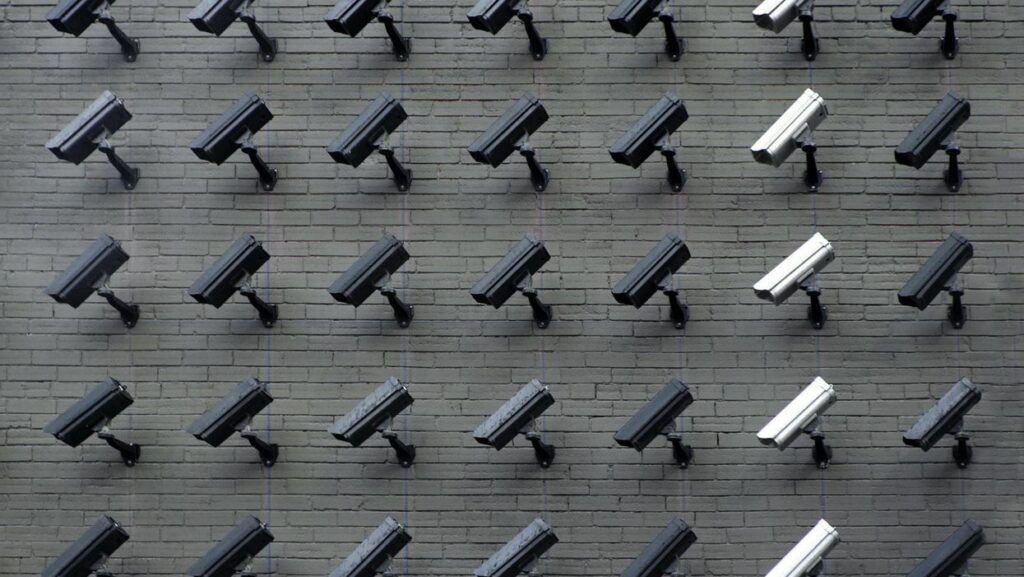In an era where the line between work and personal life blurs and remote work becomes increasingly prevalent, employee surveillance in the modern workplace has taken center stage. The pervasive use of technology, including time-tracking software and monitoring systems, raises profound questions about privacy, trust, and the well-being of employees.
As organizations grapple with the balance between productivity and individual autonomy, it’s crucial to explore the intricacies of this complex issue. In this article, we will unravel the nuances of employee surveillance, examine its impact, and suggest alternative approaches to foster employee empowerment and open communication.
Proliferation of Employee Surveillance Tools

Source: protocol.com
Time-tracking software, computer monitoring systems, and call center time-tracking software have skyrocketed in recent years. Employers across various industries are drawn to these tools for their ability to provide real-time insights into employee activities.
Time tracking software allows organizations to monitor how employees spend their work hours, ensuring that every minute is accounted for. While this might seem efficient to boost productivity, it comes at a price – the erosion of trust and privacy.
Erosion of Privacy
Privacy is a fundamental human right, and employees have a reasonable expectation of it, even in the workplace. The invasive nature of employee surveillance tools, such as computer monitoring systems, can feel like a violation of this right.
These systems track every digital move an employee makes, from the websites they visit to the keystrokes they type. While employers argue this is necessary to protect sensitive company data, it often feels like an invasion of personal space.
Psychological Impact on Employees
Constant monitoring can take a toll on employees’ mental well-being. The feeling of being watched can lead to stress, anxiety, and a sense of being constantly judged. This, in turn, can negatively affect productivity and job satisfaction.
Employees may become more focused on appearing busy than actually being productive. This pressure to constantly perform under the watchful eye of monitoring tools can lead to burnout and decreased job satisfaction.
Control software is one of the many tools employers use to monitor their employees. It offers features such as screen capture, website tracking, and application usage monitoring. While proponents argue that it is an effective way to maintain productivity and security, it has faced its share of criticism. What should you do now?
Before delving into the topic of employee surveillance, it’s crucial for employers to grasp the legal implications, as elaborated in the related article.
Empowering Productivity Without Surveillance

Source: activtrak.com
Respect Their Autonomy
Instead of passively managing through workplace surveillance, empower your team members by giving them the autonomy they need. Best Buy’s Results-Only Work Environment experiment from over a decade ago demonstrated that granting employees control over their schedules led to increased well-being and productivity.
Judging productivity based on adherence to strict office hours might be an outdated approach.
Open and Honest Communication
Rather than resorting to passive-aggressive tracking software, foster a culture of open and honest communication. If you have concerns about someone’s performance, responsiveness, or level of responsibility, address them directly.
While time-tracking software can reveal discrepancies in reported hours, the quality and quantity of work produced should be the primary focus. Effective managers find unique ways to observe workplace dynamics rather than relying solely on impersonal AI surveillance.
Leveraging Technology Wisely
Instead of monitoring every mouse movement, invest in technology that provides more meaningful insights. Project management software, for instance, can identify process inefficiencies and help streamline tasks, saving both time and resources. Instead of ensuring that employees are constantly working, please provide them with tools that enhance their productivity.
Final Thought

Source: chiefexecutive.net
Employee surveillance tools, including time-tracking software, computer monitoring systems, and call center time-tracking software, have become increasingly prevalent in the modern workplace. While these tools can offer benefits in terms of productivity and security, they also raise significant concerns about privacy and the psychological impact on employees.
Control software highlights the need for transparency and balance when implementing such tools.
In light of the narrative surrounding employee surveillance, it becomes increasingly important to focus on strengthening workplace teams, and effective team-building activities can be a valuable approach, as discussed in the related article.
Employers must consider the ethical implications of employee surveillance and prioritize the well-being and trust of their workforce. Striking the right balance between monitoring and respecting privacy is essential to creating a healthy and productive work environment in the digital age.
Ultimately, the toxic tale of employee surveillance can be transformed into a positive narrative of trust, transparency, and mutual respect in the modern workplace.



